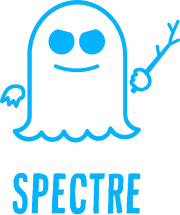User:Inferno986return/sandbox
Optician Sans[edit]
| License | SIL Open Font License (SIL OFL) |
|---|---|
| Website | optician-sans |
Optician Sans is an uppercase geometric sans-serif typeface that is based on eye chart lettering by Herman Snellen and Louise L. Sloan, which are used by Snellen charts and LogMAR charts respectively. The typeface was created as a collaboration between design agency ANTI Hamar and typographer Fábio Duarte Martins for Optiker-K, a Norwegian optician and ophthalmologist.
Background[edit]
The eye charts used only 10 Latin uppercase letters: C D H K N O R S V K that were designed using a 5x5 grid.[1]
Unicode coverage[edit]
References[edit]
- ^ ANTI HAMAR. "Optician Sans - new free font". YouTube.
Struwen[edit]
| This page contains a translation of Struwen from de.wikipedia. |
 Struwen from Westphalia | |
| Course | Breakfast, dessert |
|---|---|
| Place of origin | Germany |
| Serving temperature | Hot or cold |
| Main ingredients | Flour, milk, eggs, yeast, sultanas or raisins |
Struwen are a type of yeast pancake native to Germany that are traditionally eaten on Good Friday. They are commonly prepared in Münsterland, but also in areas of the Lower Rhine.
The word struwen derives from the Old Saxon word "struva". It means something like "something curly", "something freaky". Linguistically related are words like "Strubbel", "Struwwel" and "strubbelig" (as in "Struwwel-" or "Strubbelpeter") or "resist".
References to struwen date back to a charter written in Latin from 1090. Bishop Erpho of Münster declared on the occasion of a dispute between the abbess and the convent ladies of a monastery in Freckenhorst, that the nuns on various holidays such as Christmas, Easter and Pentecost serve a dish at dinner which is generally called "struva" by the people. Since a struwen was defined as type of a pancake after the charter was written, this can also be assumed for the time of writing the charter.[1]
Today struwen are usually fried or baked on Good Friday. However in the original charter of the 11th century, Good Friday had not been named.[2]
Usually struwen consists of a yeast dough with raisins or sultanas. From the dough flat patties are formed, which are fried in the pan from both sides. Sugar and cinnamon are often sprinkled before eating, as well as being served with apple sauce or fruit compote on the side.
References[edit]
- ^ Nagel, Norbert (8 April 2009). "Stiftsdamen aßen Struwen schon vor 920 Jahren" (in German). Westfälische Nachrichten. Archived from the original on 18 April 2014.
- ^ "Karfreitagsgericht hat eine lange Tradition" (in German). Westfälische Nachrichten. 18 April 2014. Archived from the original on 18 August 2019.
External links[edit]
Vulnerability infobox[edit]
 Logo representing Heartbleed. Security company Codenomicon gave Heartbleed both a name and a logo, contrbuting to public awareness of the issue.[1][2] | |
| CVE identifier(s) | CVE-2014-0160 |
|---|---|
| Date discovered | 1 April 2014 |
| Date patched | 7 April 2014 |
| Discoverer | Neel Mehta |
| Affected software | OpenSSL (1.0.1) |
| Website | heartbleed |
 A simple Shellshock logo, similar to the Heartbleed bug logo | |
| CVE identifier(s) | CVE-2014-6271 (initial), CVE-2014-6277, CVE-2014-6278, CVE-2014-7169, CVE-2014-7186, CVE-2014-7187 |
|---|---|
| Date discovered | 12 September 2014 |
| Date patched | 24 September 2014 |
| Discoverer | Stéphane Chazelas |
| Affected software | GNU Bash (1.0.3–2.05b) |
 A logo created for the vulnerability, featuring a lock with a shadow | |
| CVE identifier(s) | CVE-2018-3615 (Foreshadow), CVE-2018-3620 and CVE-2018-3646 (Foreshadow-NG) |
|---|---|
| Date discovered | January 2018 |
| Affected hardware | Modern Intel processors |
 A logo created for the vulnerability, featuring a ghost with a branch | |
| CVE identifier(s) | CVE-2017-5753 (Spectre-V1), CVE-2017-5715 (Spectre-V2) |
|---|---|
| Date discovered | 2013 |
| Affected hardware | Any processor that uses branch prediction |
| Website | meltdownattack |
 The logo used by the team that discovered the vulnerability | |
| CVE identifier(s) | CVE-2017-5754 |
|---|---|
| Date discovered | January 2018 |
| Affected hardware | Intel x86 microprocessors, IBM POWER processors, and some ARM-based microprocessors. |
| Website | meltdownattack |
| CVE identifier(s) | CVE-2015-1538, CVE-2015-1539, , CVE-2015-3824, CVE-2015-3826, CVE-2015-3827, CVE-2015-3828, CVE-2015-3829 and CVE-2015-3864 (Stagefright 1.0), CVE-2015-6602 (Stagefright 2.0) |
|---|---|
| Date discovered | 27 July 2015 |
| Date patched | 3 August 2015 |
| Discoverer | Joshua Drake (Zimperium) |
| Affected software | Android 2.2 (Froyo) and later (Stagefright 1.0), Android 1.5 (Cupcake) to Android 5.1 (Lollipop) (Stagefright 2.0) |
Attempting to make an infobox template for computer vulnerabilities and software bugs such as Heartbleed and Shellshock.
These templates are based off the Heartbleed, Shellshock, Spectre and Meltdown pages.
- ^ McKenzie, Patrick (April 9, 2014). "What Heartbleed Can Teach The OSS Community About Marketing". Kalzumeus. Retrieved February 8, 2018.
- ^ Biggs, John (April 9, 2014). "Heartbleed, The First Security Bug With A Cool Logo". TechCrunch. Retrieved February 8, 2018.

